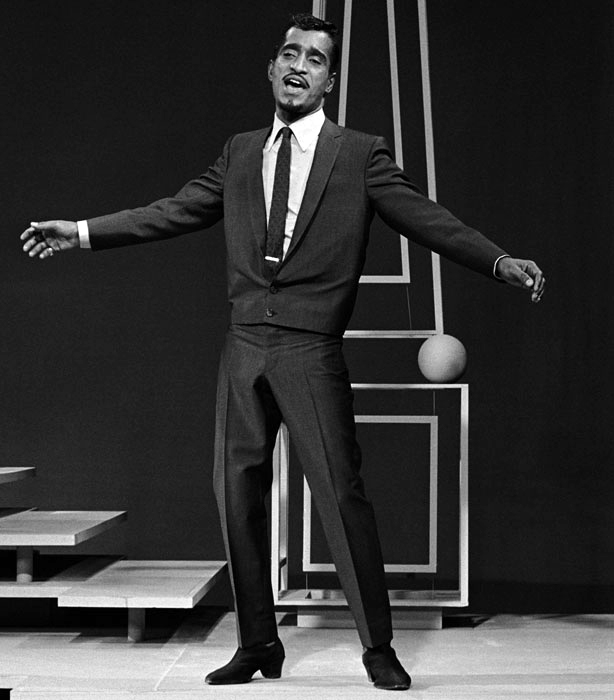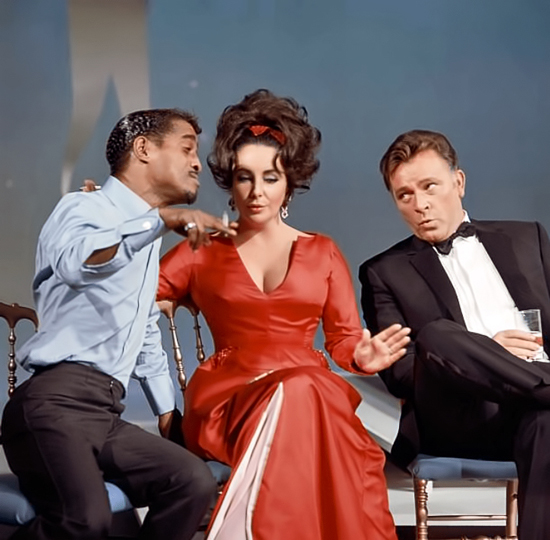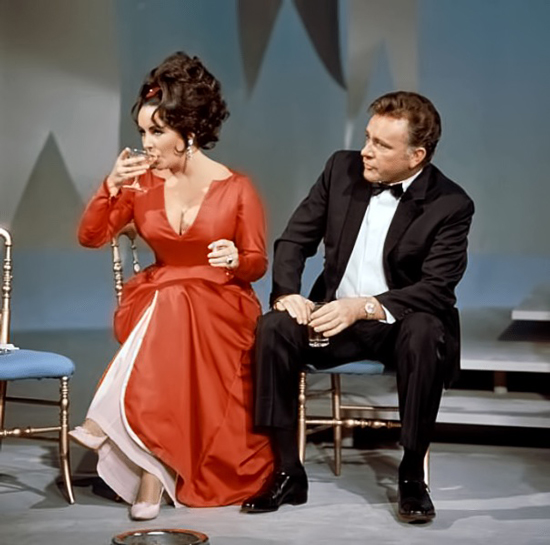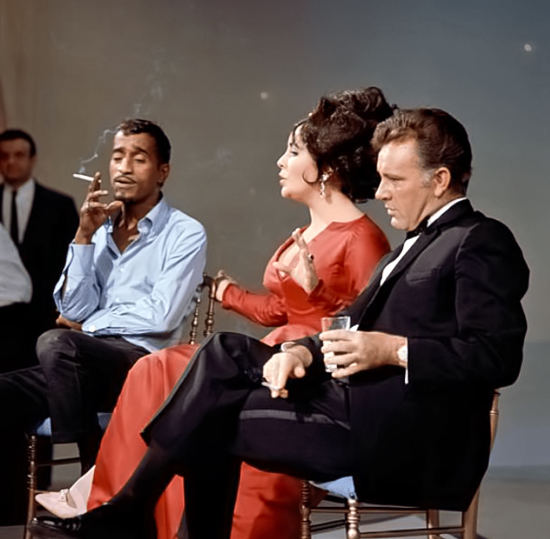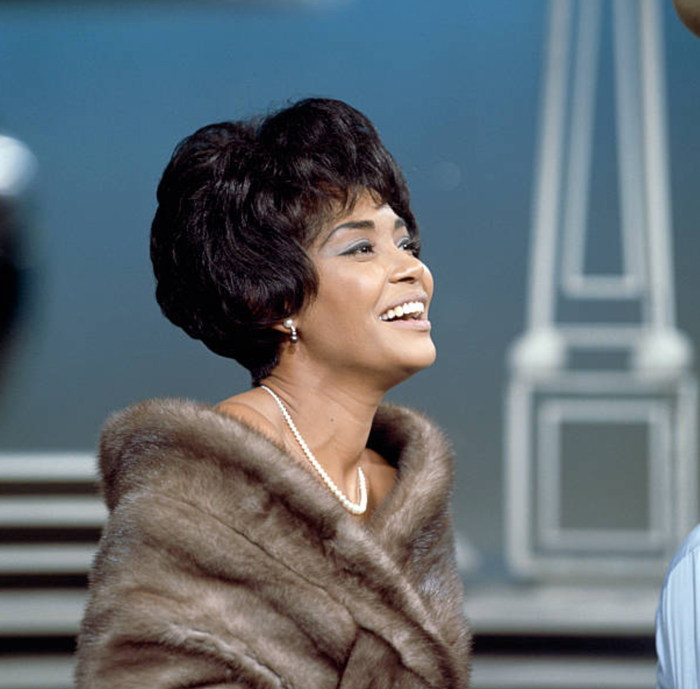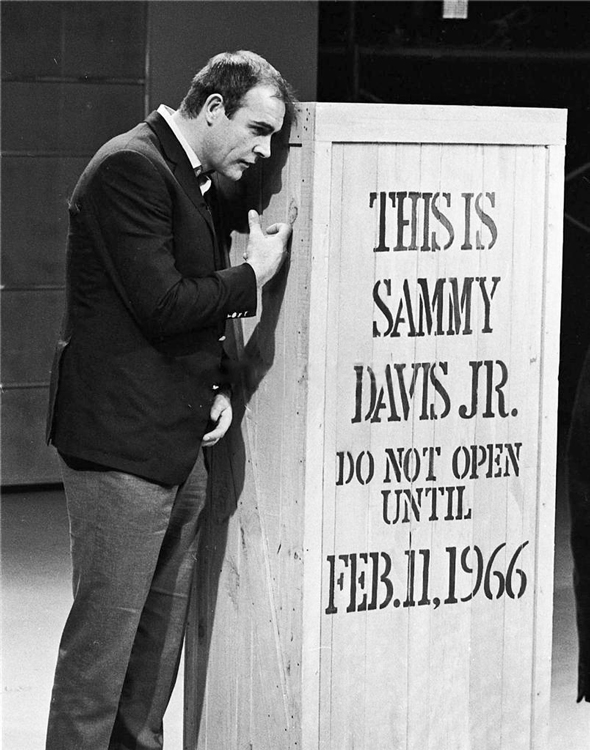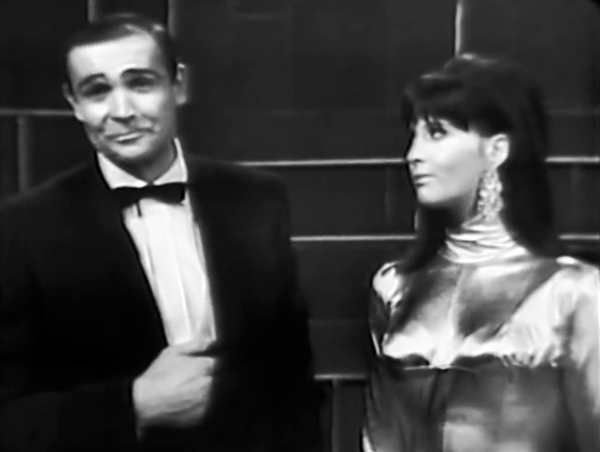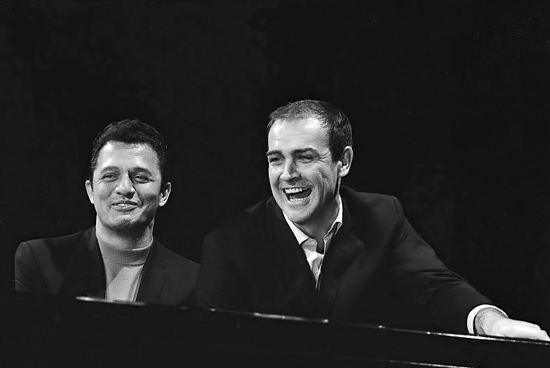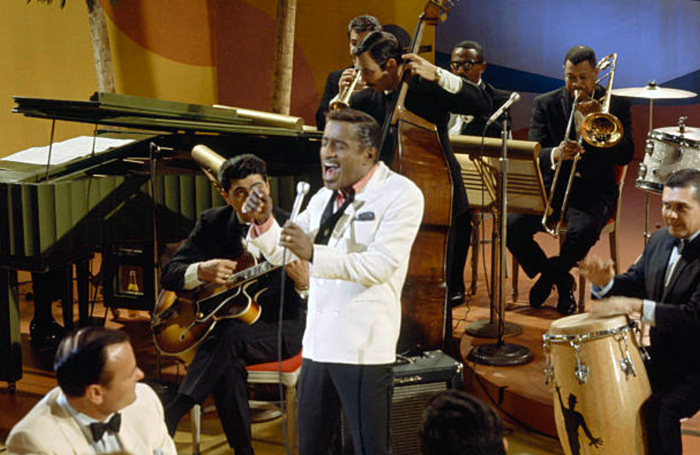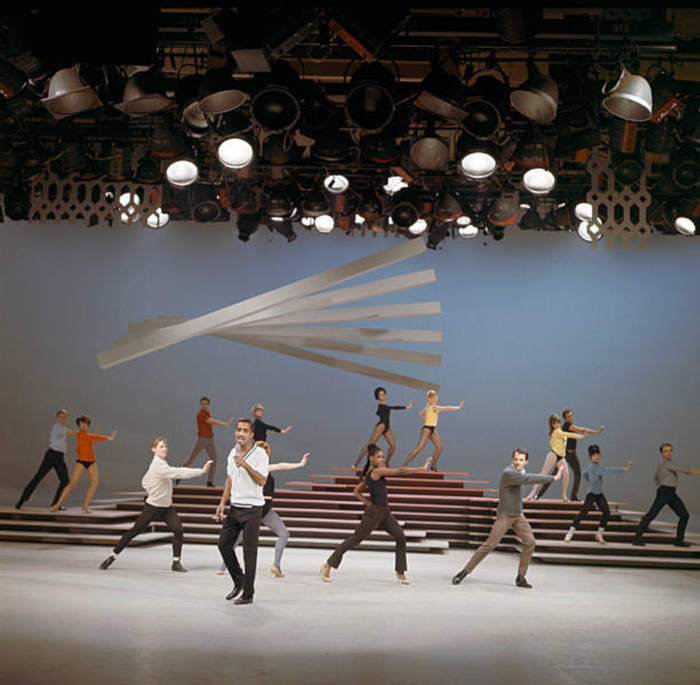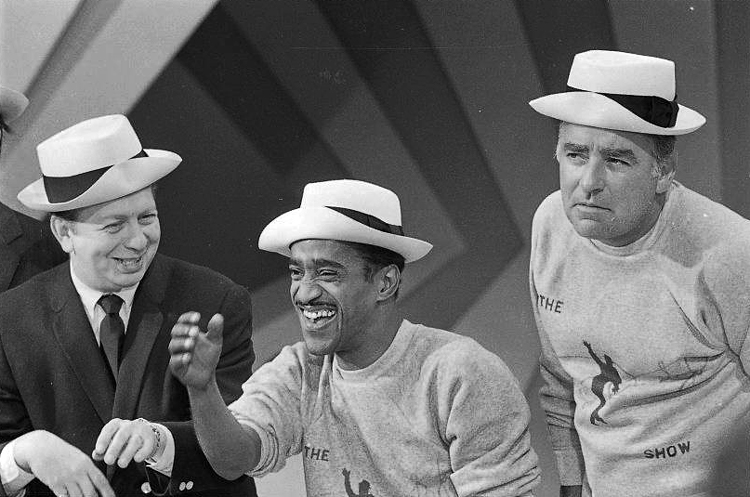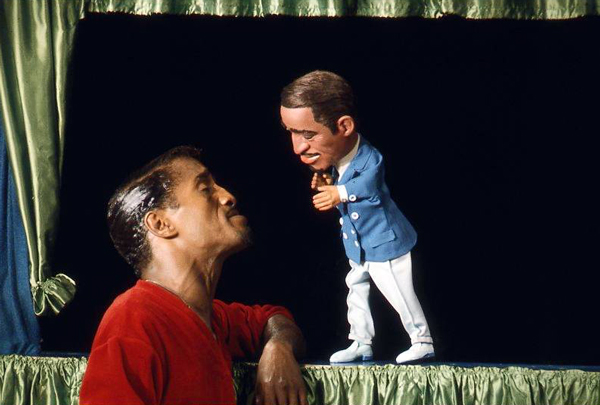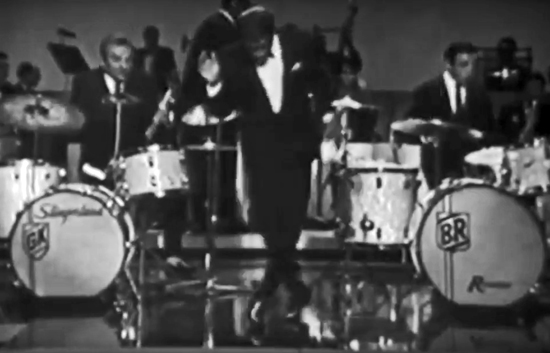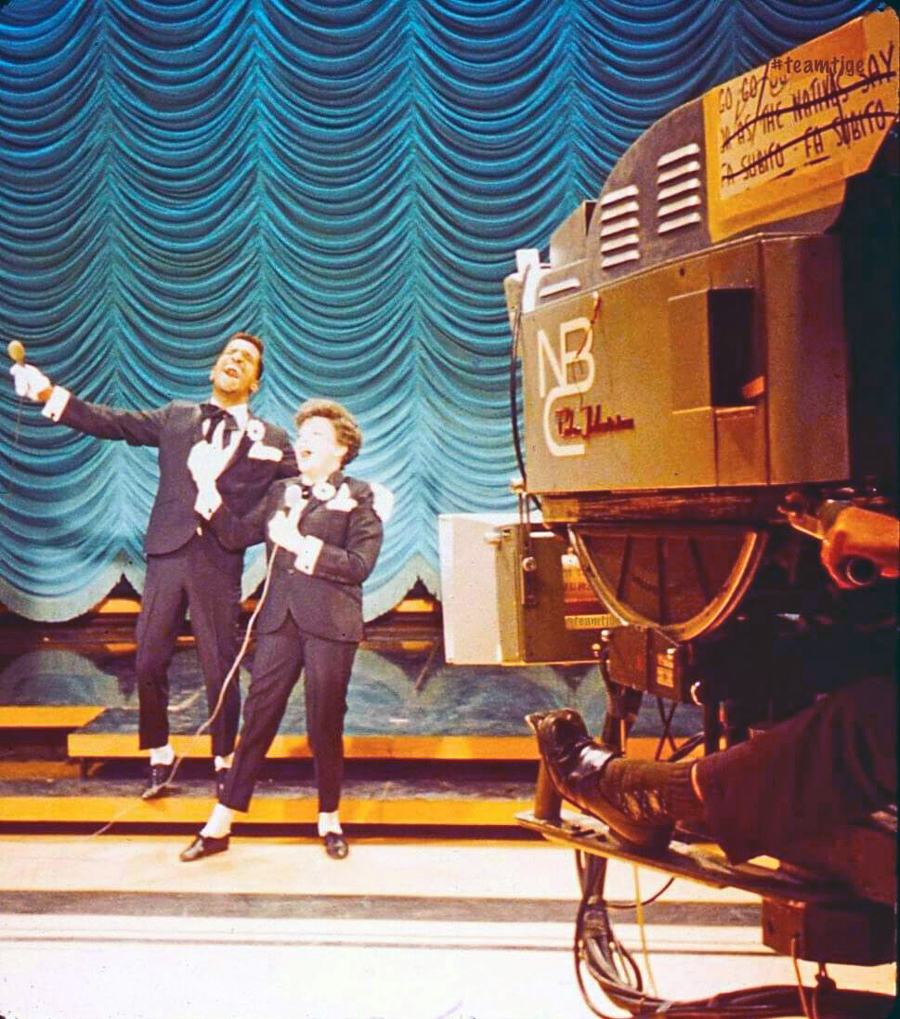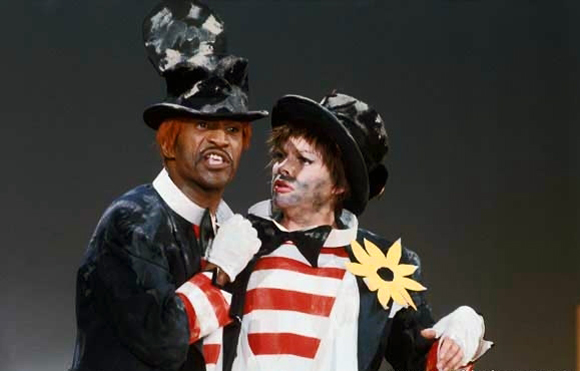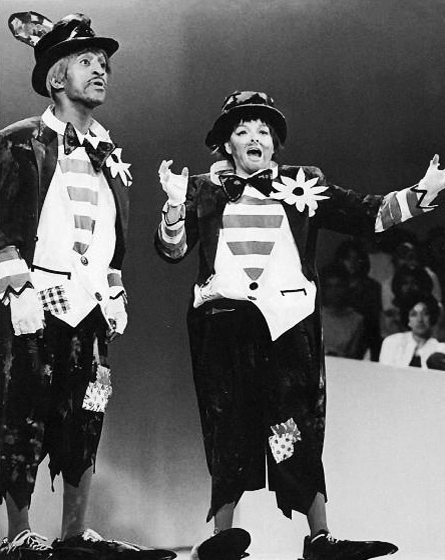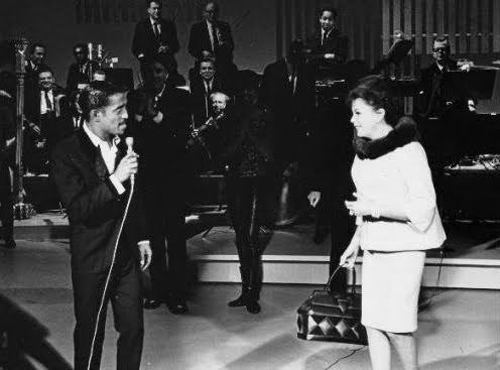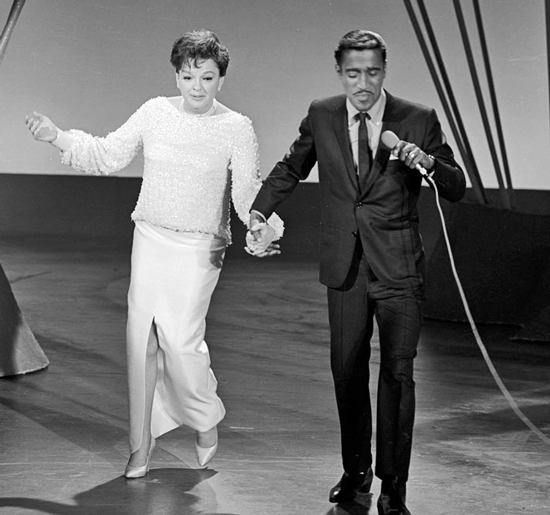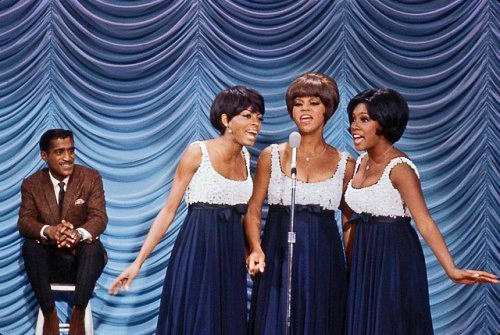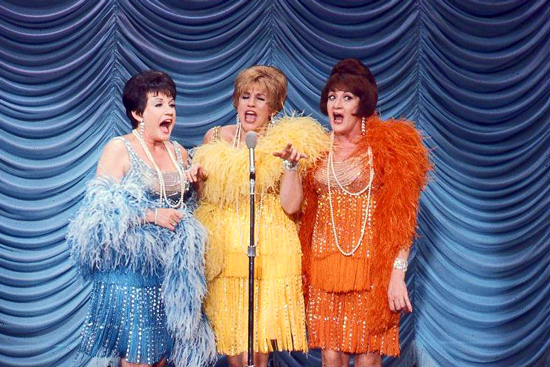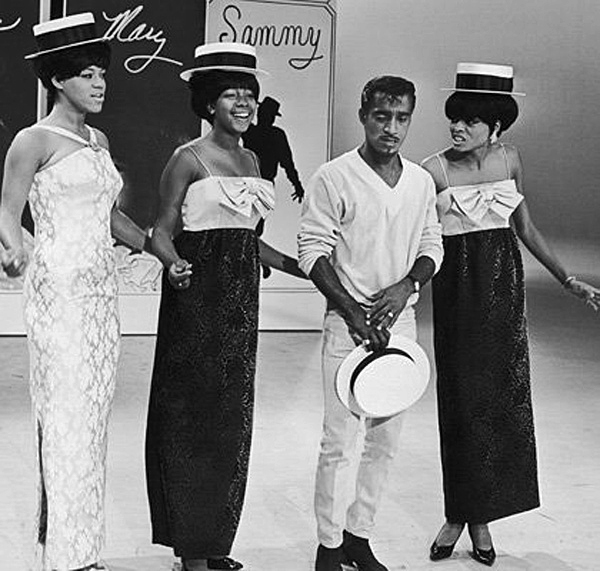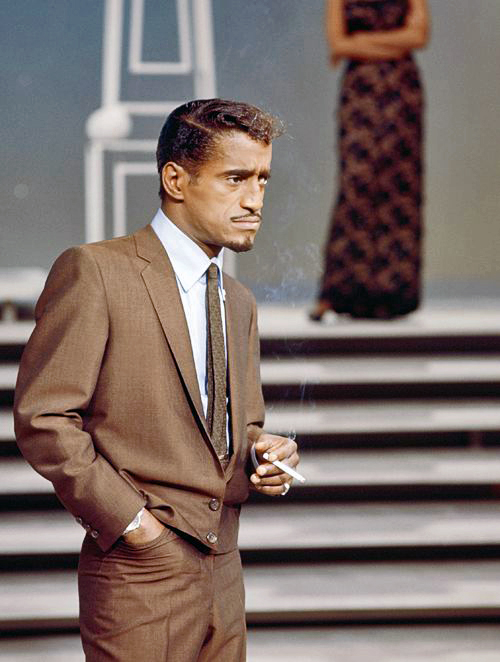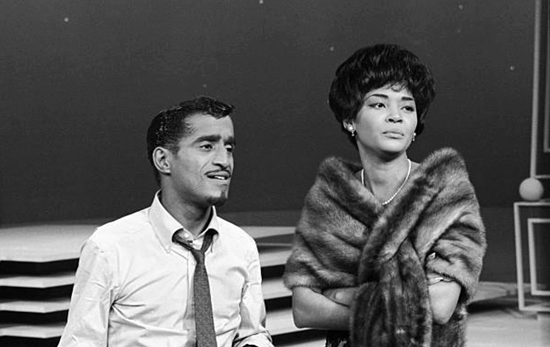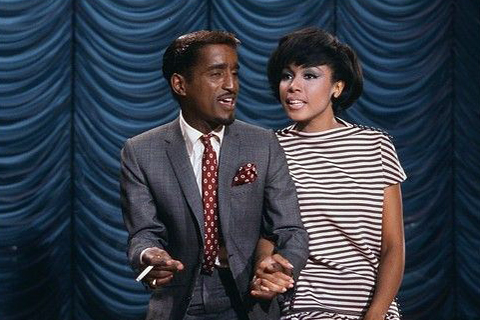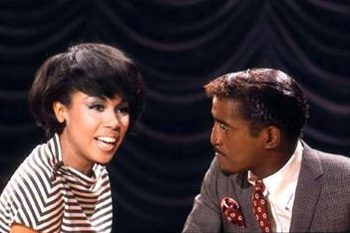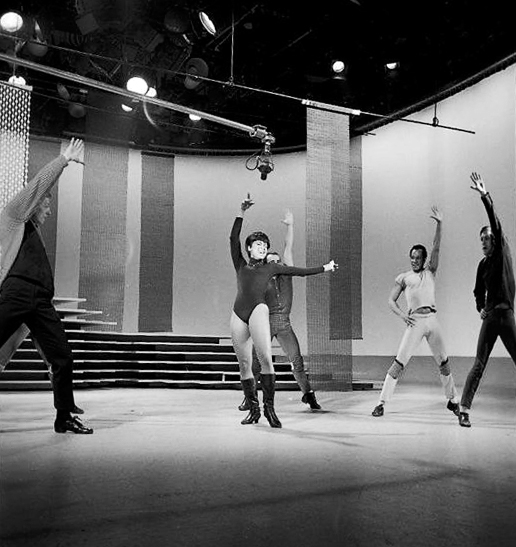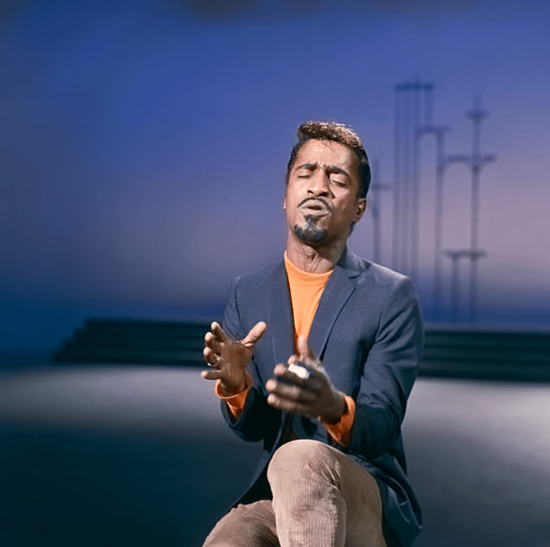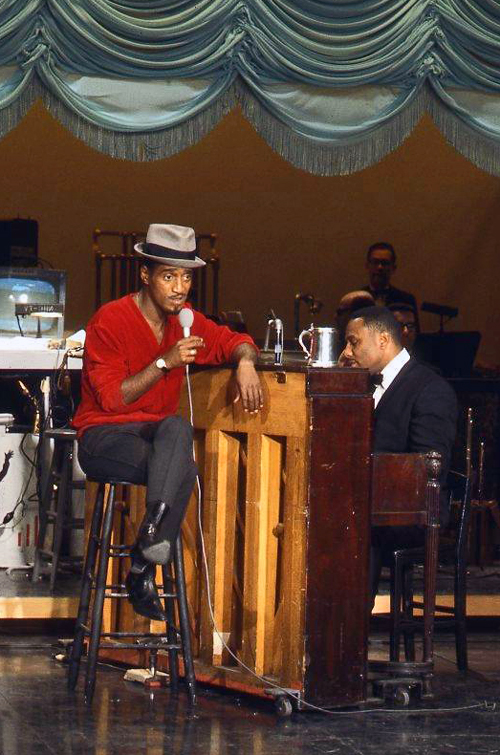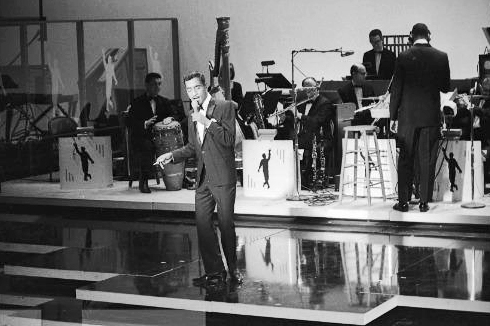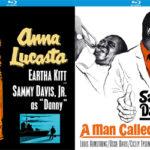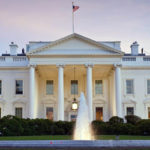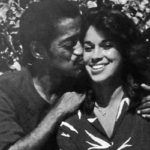Details
The story of The Sammy Davis, Jr. Show is a somewhat bizarre and unlucky one. As the preeminent variety performer of his time, Sammy Davis, Jr. had long wanted to host his own television variety series. In doing so, Sammy found himself both breaking new racial barriers and also following in the footsteps of several African American trailblazers.
Actress and singer Ethel Waters had hosted a single variety television special, The Ethel Waters Show, on NBC as early as 1939. In 1948, singer and pianist Bob Howard became the first African American to host a television series, a 15 minute program titled The Bob Howard Show, on CBS’ local New York affiliate. And in 1950, singer and pianist Hazel Scott became the first African American to host a nationally broadcast series with her 15 minute program, The Hazel Scott Show, on the DuMont Network.
Nat Cole, a close friend of Sammy’s, debuted his show, The Nat ‘King’ Cole Show, six years later on NBC. The show started at 15 minutes in length, but moved to 30 minutes the next year (and Sammy appeared on it in July 1957). It was cancelled in December 1957 due to ‘lack of sponsorship’. Eight years later, and eight months after the death of Cole in February 1965, Sammy received an offer to become the first African American to host an hour-long network variety series in prime time.
Specials lead to series offer
In 1965, Sammy spent a brief period focusing on his family life, but he quickly realised that being a homebody wasn’t for him – the lure of show-business proved irresistible. By late 1965, he was performing eight shows a week on Broadway in Golden Boy, he had just released a best-selling autobiography Yes I Can, and he was starring in and producing a feature film, A Man Called Adam. He had also shot two television variety specials for ABC, the first of which (titled Sammy Davis, Jr. and the Wonderful World of Children) aired in November. Perhaps ABC would also be interested in a series? Sammy was keen.
But it was rival network NBC, not ABC, who came calling – the network badly needed a mid-season replacement for its Friday evening World War II drama Convoy, which was failing in the ratings against two popular comedies on CBS (Hogan’s Heroes and Gomer Pyle, U.S.M.C.). Despite being aware that the show would be starting mid-season (7th January) and hence receive less lead-in publicity due to the holiday period, Sammy signed on.
First, he ordered $30,000 worth of suits in various hues from Sy Devore, intending never to wear the same suit twice. Second, he acquainted the show’s producer, Joe Hamilton, and the writers, Buz Kohan and Bill Angelos, with his full repertoire for potential use on the show. To illustrate the possibilities, he booked himself to perform for four nights at the Fontainebleau Hotel in Miami and invited them all (plus Hamilton’s wife, Carol Burnett) to watch each performance. Kohan recalls: “Everything Sammy did from “I’ll Be Glad When You’re Dead You Rascal You” [a song he’d sung at age 7] to all the impressions, to every song he’d ever sung – he did eight shows, none of them were ever the same, each show was different!”
Trouble with ABC
Soon after the announcement by NBC of The Sammy Davis, Jr. Show’s Friday 7th January debut, ABC announced that they would be broadcasting the second of the variety specials Sammy had made for them (titled Sammy and His Friends, featuring Frank Sinatra, Count Basie, Edie Adams and Joey Heatherton) on Tuesday 1st February. Furthermore, ABC would be invoking a clause in Sammy’s contract prohibiting him from appearing on television for 21 days before and 8 after the special’s airing date.
This clause meant Sammy would be able to host the premiere, but then he would have to disappear – from his own show – for four weeks! Sammy immediately tried to get ABC to change their mind and air the special in December. Then he offered to buy the rights to the special from them. It was all to no avail. Nor would NBC budge from its planned debut date, as the television seasons were set in stone and the new series had to begin after New Year’s.
This crazy beginning for the show meant NBC needed to find hosts for the episodes which would air 14th January, 28th January, and 4th February (on 21st January, NBC rebroadcast the 1960 staging for television of Peter Pan). Sammy called in a few favours and three heavyweights agreed to assist: Johnny Carson (at the time four years into hosting The Tonight Show), Sean Connery (at the time at the height of his James Bond fame), and Jerry Lewis (who had invited Sammy to star in the final episode of his own variety show on ABC, The Jerry Lewis Show, in December 1963). With hosts of this calibre locked in, the show was given at least a fighting chance. Sammy quipped “The Mets should have bench strength like that!”
Disastrous Premiere
Given the challenges the show was now facing, the first episode of The Sammy Davis, Jr. Show had to be something special; instead, it was something awful. Sammy had lined up Elizabeth Taylor and Richard Burton to guest star – a major coup for Sammy considering that the controversial couple were the hottest property in cinema at the time and they refused point blank to appear on television. For Sammy, though, they would do the show.
While The Sammy Davis, Jr. Show would usually be filmed in Brooklyn, in order to accommodate Taylor and Burton, Sammy would need to tape their interview and performances in LA. He flew out the evening of Saturday 18th December after Golden Boy finished, taped the segment in Burbank Sunday afternoon, then flew back to New York Monday morning in time to film scenes for A Man Called Adam in the afternoon – and perform in Golden Boy that night! Indefatigable is an inadequate description. The remainder of the episode, featuring Nancy Wilson, comedian Corbett Monica, and dancers Augie and Margo, was filmed later in New York.
The Sammy Davis, Jr. Show was a variety hour, however, not a talk show, so what would the supercouple of actors actually perform? Considering Taylor’s limited vocal capabilities, the two chose the traditional Welsh folk song “Ar Lan y Mor” (Beside the Sea), which they sang as a duet. In addition, they joined Sammy in “What Do The Simple Folk Do” from Camelot, and Burton (who had starred in Camelot on Broadway) also performed the finale from that musical.
So far, so good. The only problem was, as Alan Ebert, NBC’s publicity director for the show, later explained to TV Guide, Taylor was “so nervous she was practically hysterical.” The pair had been drinking champagne for some while before they arrived on stage. Perhaps to compensate, Sammy fell into the trap of using excessive flattery to put his guests at ease (a habit as an interviewer he would never break). Furthermore, the entire piece – interview and songs – had been filmed statically with the three stars on chairs, which accentuated every awkward pause in the segment (and there were plenty). Far from being a sparkling hour of variety hosted by an entertainment hurricane, the show’s pacing resembled watching paint dry.
The critical reaction was vicious, but accurate. Jack Gould wrote in The New York Times: “How in the world it would be possible to throttle such vitality is hard to conceive, but the opening hour was totally lacklustre.” The ratings were actually phenomenal, but the show had been dreadful. If people were going to give it a second chance, Sammy needed to bounce back quickly. Unfortunately, when viewers turned in the next week, they found Johnny Carson hosting The Sammy Davis, Jr. Show. “May the Bird of Paradise build a nest out of Sammy Davis’s contract”, he joked.
Format changes are too late
During Sammy’s enforced four-week hiatus, he worked hard to re-format the show. Behind the scenes, the network was pushing for seven acts on each show, to make it more like Hollywood Palace on ABC. Sammy felt the solution was for the network to allow him to be himself. A new staging was devised with the audience in pods, which allowed Sammy to get up close with his live in-studio audience. There would be more entertainer-Sammy, and less interviewer-Sammy. “If I don’t know anything else, I know how to entertain people, but I’ve got to be me.”
His return show, taped Sunday 23rd January and broadcast Friday 11th February, was everything NBC could have wanted and more. Sammy’s guests were singer and guitarist Trini Lopez (a Reprise Records stablemate), Corbett Monica, and Sammy’s Golden Boy co-star Paula Wayne. Sammy started with “The Birth of the Blues”, and sang, danced, and joked his way through the hour at the top of his game. The show finished with a rousing dance number to “I’ve Got A Woman” featuring the entire Golden Boy chorus all doing the popular dance crazes of the day: the frug, the monkey, the mash potato and the jerk.
The critical reaction was noteworthy. Atra Baer in The New York Journal-American: “It was the best musical variety show we’ve seen.” Variety: “Whatever had been seriously amiss in the mid-season premiere of The Sammy Davis, Jr. Show, was more than corrected in this return.” Tom Mackin in the Newark Evening News: “The entire telecast was an outstanding success.” John Horn in the New York Herald Tribune: “The star, in top form and spirit, made a triumph of his return to his NBC-TV series.” But this time, the show had been phenomenal and the ratings were dreadful.
Over the succeeding weeks, the ratings failed to improve, despite the fact that the show found its feet. Guests included Milton Berle, The Supremes, Tom Jones, Johnny Hartman, Mel Tormé, Frank Gorshin, Sarah Vaughan and Diahann Carroll. One early episode featured legendary drummers Gene Krupa and Buddy Rich – Sammy both tap-dancing with the two, and hosting a now-famous drum battle between them.
One guest appearance of note was Judy Garland. Having been a close friend of hers for years, Sammy was beyond delighted to be hosting Judy. A long medley was prepared based on the routine of two tramps singing “We’re a Couple of Swells”, as Judy had done with Fred Astaire in 1948’s Easter Parade. However, on the day of taping, Judy was suffering from severe laryngitis, and an even worse case of nerves. She barely got through the dress rehearsal, but she was nothing if not the ultimate professional, and the taping was an unqualified success.
When it was over, Sammy was overcome with joy, and – far from thanking his lucky stars that certain disaster had been averted – in a moment of spontaneous madness he asked Judy (on camera) whether she would return the following week! That she did, and another mammoth medley was prepared which the two performed delightfully, despite Garland’s ongoing issues with her voice.
Cancellation
By mid-March NBC had run out of patience with the ratings and despite the fact that only 10 episodes had even aired to this point, decided not to renew the show. Sammy continued to give his all for the remaining shows and in retrospect, the network’s decision appeared hasty. Sammy later said “Those were our best shows and [the network] said it, too, afterward.” The NAACP briefly protested and encouraged a letter-writing campaign. But the cancellation wasn’t due to ‘lack of sponsorship’ (sometimes a codeword for the racism which had led to The Nat ‘King’ Cole Show’s demise), as both Bufferin aspirin and El Producto Cigars were seemingly happy national sponsors; the show was in reality a ratings casualty.
The series finale, taped 17th April, must rank to this day as one of the greatest solo performances in television entertainment history. Sammy decided to go out with a one-man show: he danced the show’s opening sequence live to camera, he sang (including an excellent rendition of “Soliloquy” from Carousel), he tapped, he did impressions, he showed off his gunmanship, he mimed, he even joked with his puppet doppelgänger – he did it all. Then he closed with “What Kind Of Fool Am I”, dressed as a clown.
Sammy and his wife, May Britt, attended a cast party after the show’s taping, and were presented with a cake that read “The Sammy Davis Show – Born Jan 7th 1966 – Died Apr 17th 1966”. Despite keeping up appearances publicly, in truth Sammy was devastated. The show was his first major career failure in 15 years, and marked a turning point in his life: his marriage was failing and he and May soon separated, professional activities with his ‘Rat Pack’ contemporaries had effectively ceased, and Golden Boy had recently closed on Broadway in March. Sammy headed back on the road.
Series availability
The show was broadcast in colour, but only black and white kinescopes of varying quality remain. Several episodes and various clips have found their way onto YouTube, and The Paley Centre For Media has all episodes except #6 and #14 listed in its collection available for viewing. Reprise Records released an LP misleadingly titled The Sammy Davis, Jr. Show, but it was not a soundtrack album. It was released simply to take advantage of the show’s publicity, and all songs on the album were previous studio recordings.
Episode List
| Episode | Date | Guest Stars |
| S1 E1 | 7 January, 1966 | Richard Burton, Elizabeth Taylor, Nancy Wilson, Corbett Monica, Augie and Margo |
| S1 E2 | 14 January, 1966 | Host: Johnny Carson Diahann Carroll, Joan Rivers, Mickey Rooney, Tony Mottola, Bobby Van, Don Allen |
| S1 E3 | 28 January, 1966 | Host: Sean Connery Buddy Greco, Lola Folana, Nancy Ames, Tim Conway |
| S1 E4 | 4 February, 1966 | Host: Jerry Lewis Peggy Lee, Danny Costello, The Wiere Brothers, The Skylarks, Terry Gibbs Orchestra |
| S1 E5 | 11 February, 1966 | Trini Lopez, Corbett Monica, Paula Wayne |
| S1 E6 | 18 February, 1966 | Milton Berle, Frank Sinatra, Jr., Leslie Uggams, The Pied Pipers, The Nicholas Brothers |
| S1 E7 | 25 February, 1966 | Juliet Prowse, Buddy Rich and Gene Krupa, George Maharis, Barbara McNair, Bob Melvin |
| S1 E8 | 4 March, 1966 | The Supremes, The Andrew Sisters, Jonathan Winters, Johnny Hartman |
| S1 E9 | 11 March, 1966 | Shelia McRae, Gordon McRae, Peter Lawford, Mel Tormé, Timmie Rogers |
| S1 E10 | 18 March, 1966 | Judy Garland, Tom Jones, Nipsy Russell, Lada Edmond, Jr., Lester Wilson |
| S1 E11 | 25 March, 1966 | Judy Garland, Frank Gorshin, Sarah Vaughan, Teri Thornton, The Lettermen |
| S1 E12 | 1 April, 1966 | Diahann Carroll, Jay and the Americans, Pat Henry, Vince Edwards |
| S1 E13 | 8 April, 1966 | Ella Logan, Arthur Godfrey, Lola Falana, George Kirby |
| S1 E14 | 15 April, 1966 | Art Carney, Kaye Stevens, Betty Carter, Adam Wade, Sergio Franchi, Johnny Brown |
| S1 E15 | 22 April, 1966 | One man show – including miming “Ya Got Trouble”, and singing “Soliloquy” and “What Kind Of Fool Am I?” |




